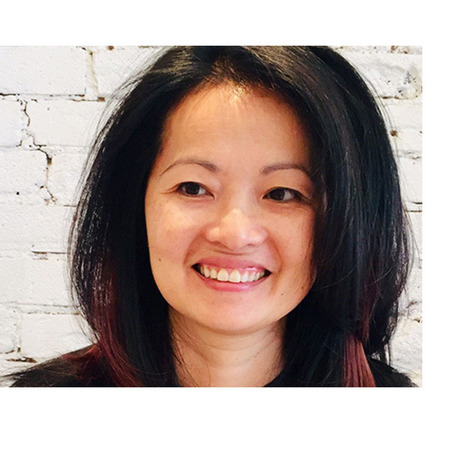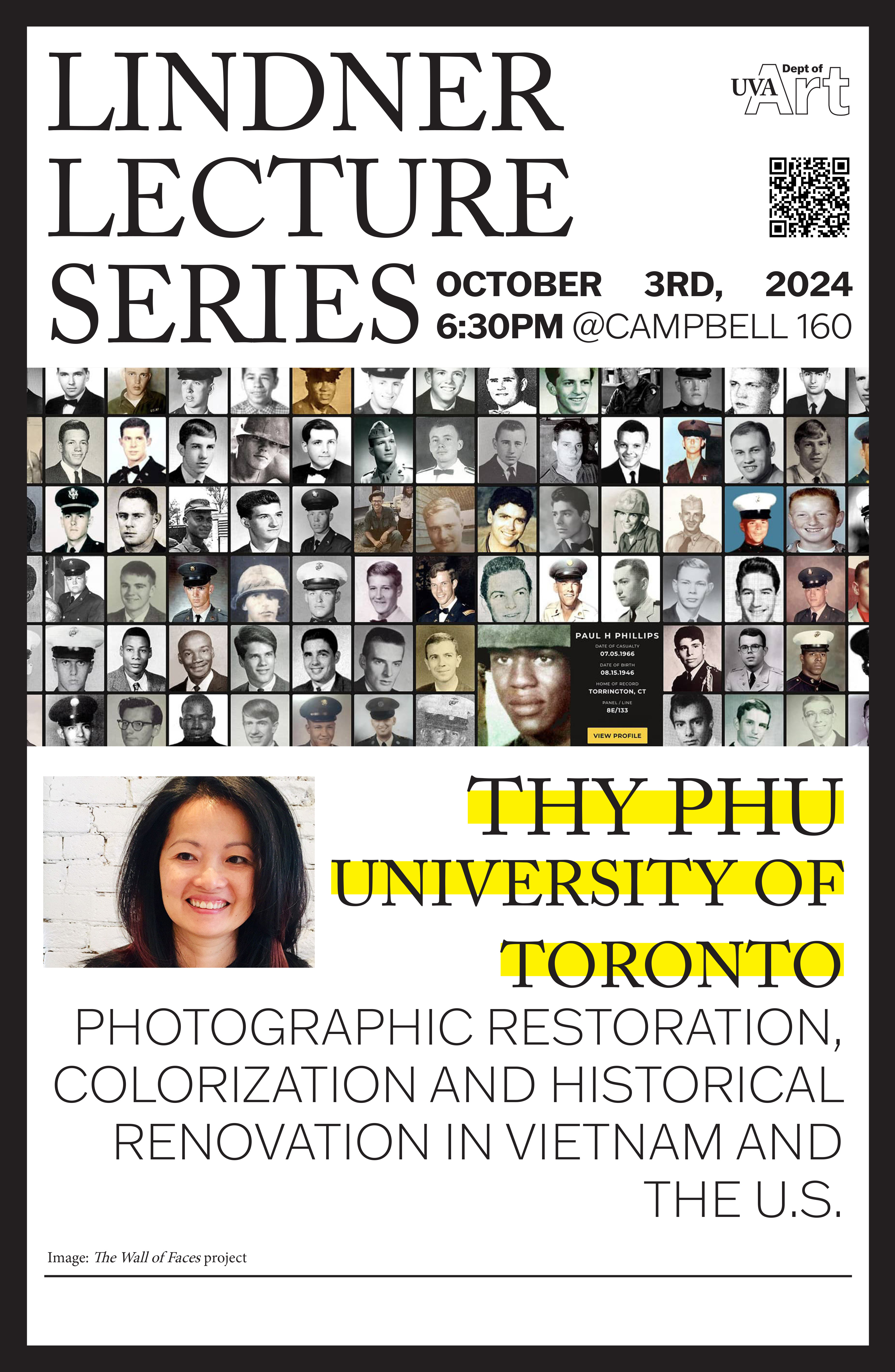
Thy Phu Speaking for Lindner Lecture Series
The Lindner Lecture Series is funded by the Sacks Art Lecture Endowment which supports an annual lecture within the Department of Art. This fall Thy Phu, Distinguished Professor of Race, Diaspora and Visual Justice at the Department of Arts, Culture, and Media, University of Toronto-Scarborough, will be delivering "Photographic Restoration, Colorization and Historical Renovation in Vietnam and the U.S." October 3 at 6:30 pm, in Campbell Hall 160.
Visual manipulation has been common in war photography, but in the digital age, correcting and colorizing vintage images has become pervasive. Projects like Random Acts of Photo Restoration on Facebook and Vintage Vietnam on Instagram use crowdsourcing to leverage the affordances of AI software to restore and colorize personal photographs, including those from the "Wall of Faces," a virtual memorial supported by the Vietnam Veterans Memorial Fund. In Vietnam, Project Team Lee is an initiative that deploys volunteers to digitize, colorize, and reunite portraits of martyrs with the revolutionary mothers who have long mourned sons sacrificed for the anticolonial cause. What drives this fascination with photographic restoration? How do practices such as colorization, influence the revolutionary spirit and elicit patriotism among the postwar generation in Vietnam and the U.S.?
This presentation examines the U.S.-based Wall of Faces project and contrasts it with the initiatives of Project Team Lee, situating their respective visual practices within a broader visual history of the Vietnam War. Specifically, I contrast the use of colored photographs in Vietnam Pictorial from the 1950s to the 1970s, which aimed to envision future socialist ideals, with today’s digital colorization, exploring how it seeks to revive revolutionary ideals in the context of late socialist capitalism. For those without direct war experience, vintage photographs offer a way to access memory, not just through displaying images but also through restoration and colorization, creating a poignant visual reunion as eyewitnesses age. However, these practices are controversial, especially in an era of deep fakes, raising concerns about the authenticity of heritage objects and history. I argue that an aesthetics of embellishment projects fantasies of the past to suit present needs as the U.S. and Vietnam grapple with the legacies of the war.
